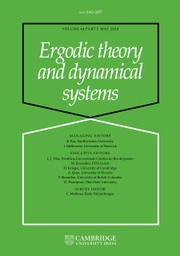Crossref Citations
This article has been cited by the following publications. This list is generated based on data provided by Crossref.
Liu, Chunlin
and
Rodrigues, Fagner B.
2024.
Metric Mean Dimension via Preimage Structures.
Journal of Statistical Physics,
Vol. 191,
Issue. 2,





